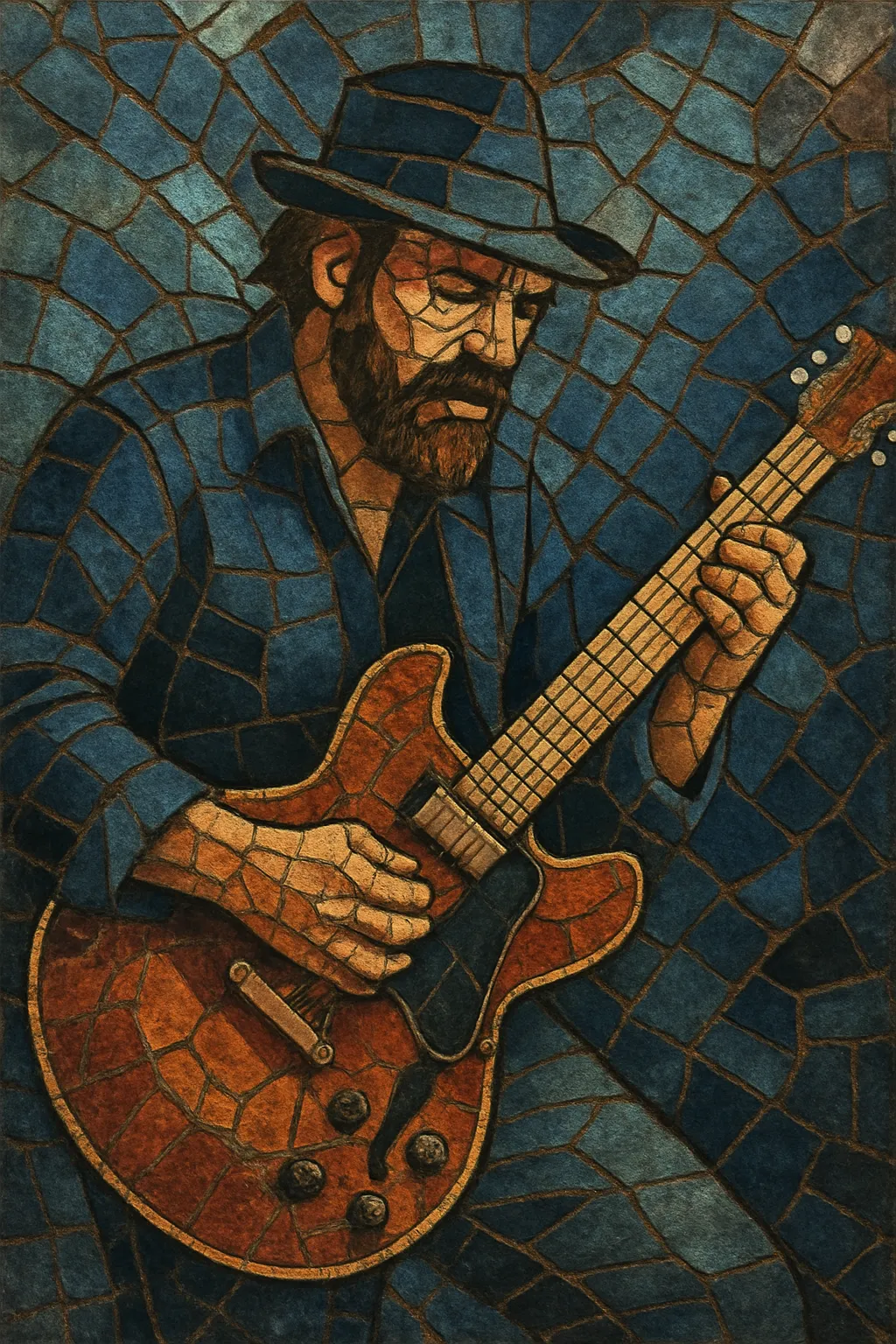Blues rock is a guitar-driven style that fuses the raw feeling and 12‑bar structures of the blues with the power, volume, and rhythmic punch of rock.
It emphasizes riff-based songs, pentatonic and blues-scale soloing, call‑and‑response between voice and guitar, and an expressive, often gritty vocal delivery.
Typical ensembles are power trios (guitar, bass, drums) or quartet formats adding second guitar, keyboards, or harmonica, and performances commonly feature extended improvisation.
Sonically, it favors overdriven tube-amp tones, sustained bends, vibrato, and dynamic contrasts, moving from shuffles and boogies to straight‑eighth rock grooves.
Blues rock emerged as young British and American musicians reinterpreted African American blues through a louder, rock-oriented lens. In the UK, the blues revival catalyzed by Alexis Korner and John Mayall led to bands like The Rolling Stones and The Yardbirds electrifying Chicago and Delta blues repertoire. In the US, The Paul Butterfield Blues Band and Canned Heat amplified urban electric blues with rock rhythm sections and club-ready volume.
Cream and The Jimi Hendrix Experience revolutionized the style with power-trio virtuosity, high gain tones, and extended improvisation, translating club jams to arenas. Albums like “Disraeli Gears,” “Are You Experienced,” and “Wheels of Fire” helped define the idiom’s riff-forward writing and solo-centric performances. Parallel scenes in London, Chicago, San Francisco, and New York cross-pollinated with psychedelia and the burgeoning rock festival circuit.
Led Zeppelin, Free, and Rory Gallagher pushed blues rock toward heavier riff forms and greater volume, helping to seed hard rock and early heavy metal. In the American South, The Allman Brothers Band blended twin‑lead guitars, blues changes, and extended jams, laying foundations for southern rock. ZZ Top distilled Texas blues swagger into arena-ready rock hooks. Pub rock in the UK later stripped things back to rootsy, bar-band essentials.
The 1980s saw a high-profile resurgence via Stevie Ray Vaughan, whose tone, phrasing, and songwriting reinvigorated mainstream interest. Subsequent waves—from The Black Crowes and Gov’t Mule to The Black Keys and Joe Bonamassa—updated production while retaining core elements: dominant‑7th harmony, riff ostinatos, and improvisation. Today, blues rock thrives in live circuits and festivals, with boutique amps, vintage instruments, and high-fidelity recordings supporting both traditionalist and modern hybrid approaches.


